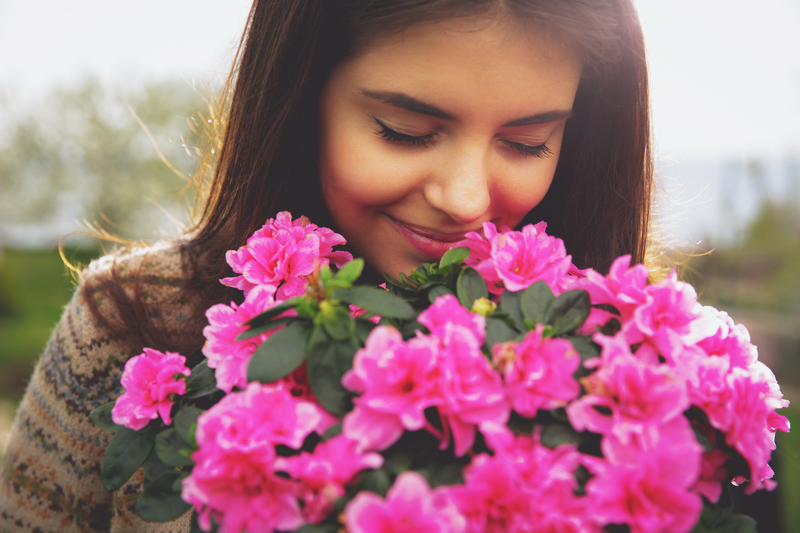Sunflowers Unmasked: Surprising Realities
Posted on 21/08/2025
Sunflowers Unmasked: Surprising Realities
Sunflowers are one of the most recognizable and beloved flowers in the world. Their towering stalks and vibrant yellow petals have made them a symbol of happiness, hope, and warmth across many cultures. But beneath the radiant allure lies a world of fascinating secrets and lesser-known facts. Sunflowers unmasked reveals the surprising realities about these botanical wonders, from their intricate biology to their vital cultural and ecological roles. This comprehensive, SEO-optimized article peels back the petals on sunflowers to uncover truths that will captivate gardeners, nature enthusiasts, and anyone curious about the natural world.
Unveiling the Origins: The Ancient Roots of Sunflowers
Sunflower realities begin with their remarkable history. Sunflowers (Helianthus annuus) are native to North America, and archaeological evidence traces their domestication back some 4,500 years. Indigenous peoples cultivated sunflowers not just for their ornamental beauty but also as a valuable food crop, medicine, and even in religious ceremonies.
- Nutritional powerhouse: Sunflower seeds were ground into flour and used as a staple in ancient diets.
- Medicinal uses: Early Native American tribes utilized sunflower sap and oil to treat wounds and soothe skin ailments.
- Spiritual significance: In some cultures, sunflowers represented the sun deity and were integral in prayers for good harvests.
Today, sunflowers maintain strong cultural connections worldwide, symbolizing loyalty, adoration, and even environmental hope due to their powerful phytoremediation abilities.

The Science Behind the Beauty: How Sunflowers Track the Sun
One of the most captivating sunflower facts is their ability to move in response to sunlight, a trait called heliotropism. Young sunflower buds face east in the morning and track the sun's arc across the sky each day. By dusk, their heads face west, only to return to the east before sunrise.
How Heliotropism Works
Sunflowers achieve this unique movement due to differential growth on their stem's east and west sides. Special cells expand on the side away from the sunlight, causing the stem to bend toward the sun.
- Immature sunflowers (before blooming) exhibit this daily movement for optimal photosynthesis and growth.
- Mature sunflowers, however, stop moving and permanently face east. Research suggests this orientation helps attract more pollinators by warming the flower earlier in the day.
This fascinating adaptation is not just an endearing trait. It has inspired studies in robotics and solar panel tracking systems, showing how the lessons of nature can inform modern technology.
Sunflowers in the Global Economy: More Than Just a Pretty Face
The truth about sunflowers extends far beyond the garden. These plants are an economic powerhouse, impacting industries ranging from food to biofuels.
Sunflower Oil: A Global Commodity
- Sunflower oil is the fourth most-consumed oil in the world, prized for its light flavor and high vitamin E content.
- Leading producers include Ukraine, Russia, and Argentina, with global annual production reaching millions of tons.
Edible Seeds and Snack Craze
- Roasted and salted sunflower seeds are a popular snack in diverse cultures, favored for their nutty flavor and health benefits.
- They provide a protein-rich, heart-healthy snack and are used in baking, salads, and granolas.
Sunflowers as Sustainable Biofuel
Sunflower oil can also be processed into biodiesel, offering a renewable, less polluting alternative to fossil fuels. Researchers are exploring high-oil-yield varieties to improve fuel efficiency, making sunflowers increasingly important in the search for green energy sources.
Environmental Superheroes: Sunflowers and Phytoremediation
Few realize that sunflowers unmasked reveal a powerful tool for environmental cleanup. Sunflowers possess an extraordinary ability to draw toxins from contaminated soils--a process known as phytoremediation.
- Radiation Clean-Up: Sunflowers were planted in the aftermath of the Chernobyl and Fukushima nuclear disasters to help absorb radioactive elements such as cesium and strontium from the soil and water.
- Heavy Metal Absorption: Sunflowers can remove lead, arsenic, and other heavy metals, making them invaluable in rehabilitating polluted land.
- Air Purification: Indoors, sunflower plants can help improve air quality by absorbing certain toxins from the atmosphere.
This natural form of detoxification not only saves costly cleanup expenses but also leaves the landscape more vibrant and productive. It's no wonder sunflowers are hailed as environmental heroes in the fight against pollution!
Unexpected Sunflower Realities in the Garden
Companions and Challengers: How Sunflowers Affect Other Plants
While many gardeners love the look of sunflowers, their presence in the garden comes with surprising truths. Sunflowers produce allelopathic compounds--chemicals that can inhibit the growth of nearby plants.
- Certain vegetables, like potatoes and beans, may struggle when planted too close to sunflowers.
- However, sunflowers can act as a natural pest deterrent, attracting pollinators and providing shelter for beneficial insects such as ladybugs and lacewings.
Pests, Diseases, and Nature's Balance
Sunflowers are generally hardy, but they are not immune to pests. Sunflower surprises include their susceptibility to:
- Aphids, cutworms, and sunflower moths
- Fungal diseases like downy mildew and rust
Regular inspection and crop rotation can help minimize these issues, keeping flowers--and their blooms--healthy.
Sunflower Diversity: More Than Yellow
When we think of sunflowers, many picture a towering stalk with a bold yellow crown. Yet, the reality is far more diverse. Over 70 species of sunflowers exist, with an even wider spectrum of colors, sizes, and forms.
Exotic Varieties and Giant Types
- 'Moulin Rouge': Offers deep maroon, almost chocolatey blooms.
- 'Teddy Bear': Short and bushy plants with fluffy golden flowers, ideal for containers.
- 'Russian Giant': These can wow with heights exceeding twelve feet and blooms topping two feet across!
- Multi-headed types: Some varieties produce dozens of smaller flowers per stalk, offering extended garden color.
Fun Fact: Not all sunflowers are annuals; some species are perennial, returning year after year with little care.
Unexpected Symbolism and Artistic Inspiration
The story of sunflowers unmasked would be incomplete without acknowledging their role in art and symbolism. Long before Vincent van Gogh's famous series, sunflowers have been a cultural icon.
Sunflowers in Art Across the Ages
- Native American symbolism: Represented bountiful harvests, the sun, and abundance.
- Van Gogh's Sunflowers: A study in joy, hope, and even the fleeting nature of life, these paintings helped cement the flower's status in modern art imagination.
- Modern symbolism: In Ukraine, the sunflower is a national symbol, representing peace and resilience amid adversity.
Sunflower Science: More Than Meets the Eye
The flower you see as a single majestic bloom is actually an inflorescence--a composite structure made of hundreds or even thousands of tiny flowers, called florets. This unique biology contributes to sunflowers' reproductive success.
- Ray florets: The 'petals' on the outside are actually individual flowers, designed to attract pollinators.
- Disk florets: The central portion consists of fertile flowers that develop into seeds, arranged in a stunning spiraling pattern known as the Fibonacci sequence.
Did you know? The spiral arrangement isn't just for beauty: it maximizes the number of seeds that can fit in a given area, an elegant example of nature's mathematics at work.
Sunflower Seeds: Tiny Capsules of Health
Let's not forget the remarkable nutritional profile of sunflower seeds. These little powerhouses are packed with:
- Vitamin E--an essential antioxidant that supports immune health and skin vitality
- Magnesium, selenium, and zinc, which aid in metabolism and cardiac function
- Plant-based protein and healthy unsaturated fats
Consuming sunflower seeds regularly may help reduce inflammation, promote heart health, and even stabilize moods due to the presence of tryptophan, a precursor to serotonin.
Cultivating Sunflower Success: Surprising Gardening Tips
Getting Started with Sunflowers
- Soil and planting: Sunflowers prefer well-draining, slightly acidic to neutral soil. Direct-sow seeds outdoors after the last frost for best results.
- Spacing: Give ample space for airflow; large varieties may require 2-3 feet between plants!
- Watering: Once established, sunflowers are drought tolerant, but consistent, deep watering promotes larger blooms.
- Staking: Towering varieties benefit from sturdy support, especially in windy locations.
Harvesting Seeds and Blooms
- Wait until backs of flower heads turn yellow-brown, then cut and hang to dry, capturing seeds for consumption or next year's planting.
- Sunflowers make excellent cut flowers for arrangements; cut stems early in the morning for longer vase life.

Unmasking the Myths and Marvels
In peeling back the layers of these iconic blooms, sunflowers unmasked offer endless wonder:
- They're not always yellow, nor are they always annual.
- They harbor both inviting and inhibitory effects on their plant neighbors.
- Far from mere ornamentals, they play crucial environmental, economic, and cultural roles.
Conclusion: Sunflowers--Icons Revealed
Whether you admire them for their beauty, grow them for their seeds, or marvel at their ecological talents, sunflower realities offer far more than meets the eye. Their resilience, utility, and symbolism span centuries and continents, culminating in a legacy that continues to enrich the world.
Next time you see a sunflower--standing tall in a field or nodding in a city garden--remember: their story is deeper, richer, and more surprising than most ever realize. The truth about sunflowers is as radiant as the blooms themselves.
Unmask the sunflower in your own backyard and discover a universe of marvels waiting to unfold beneath those golden petals!
Latest Posts
Expert Orchid Care Tips and Tricks
Find the Floral Match for Your Unique Personality
Sunflowers Unmasked: Surprising Realities





